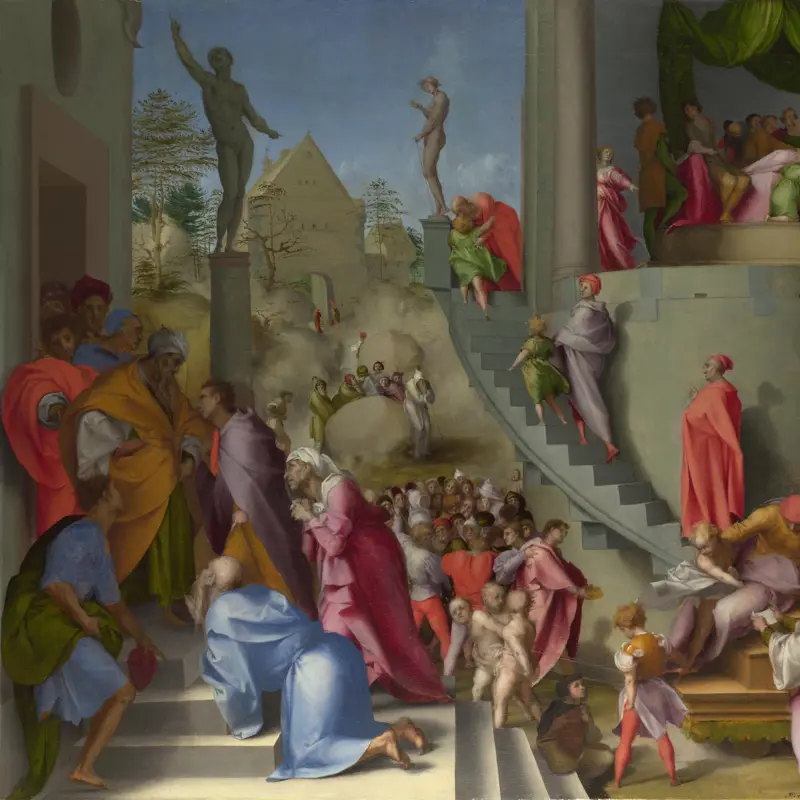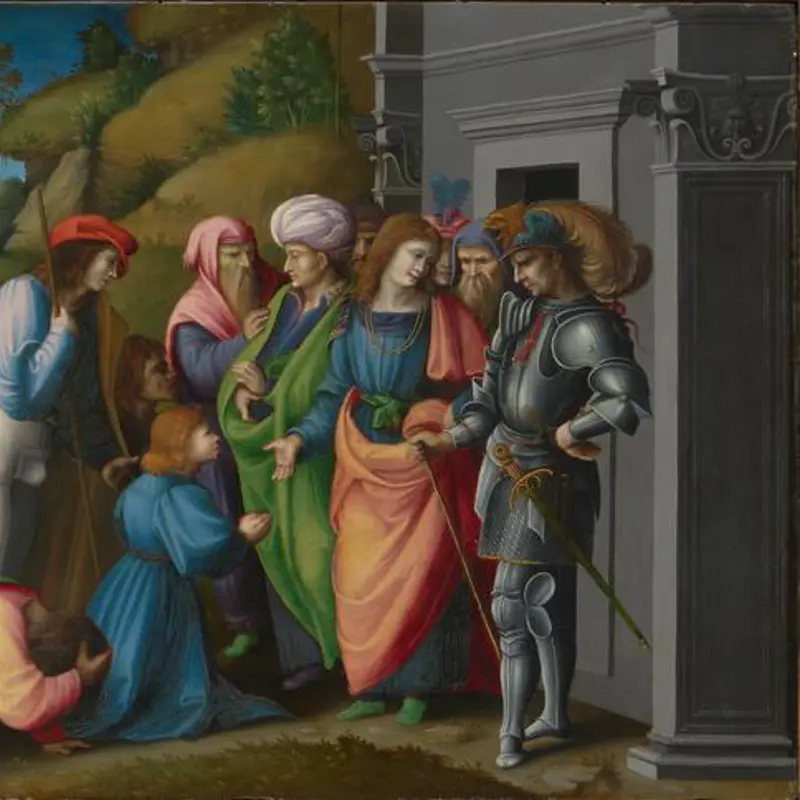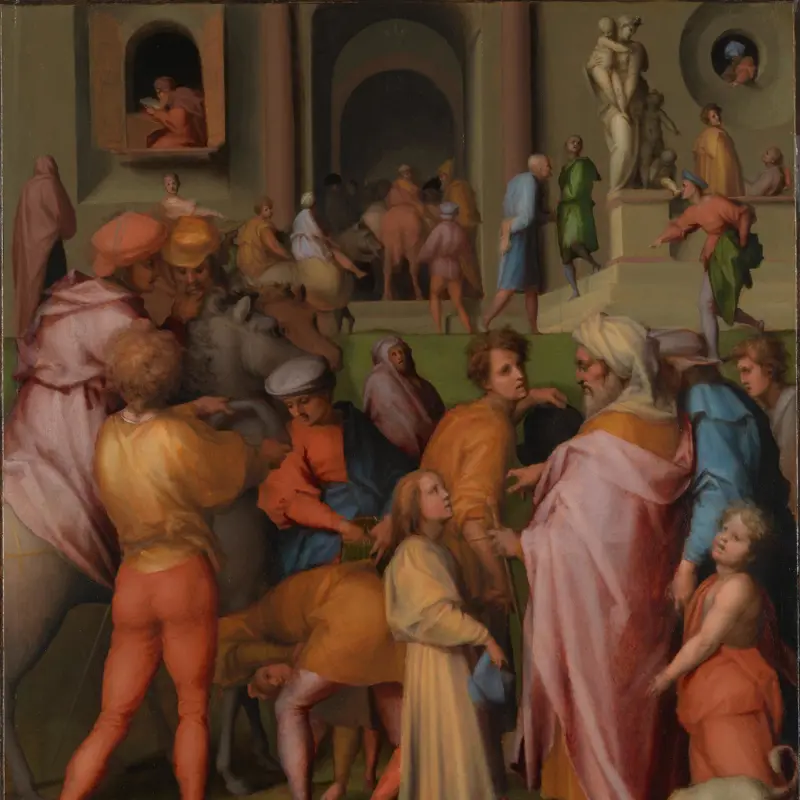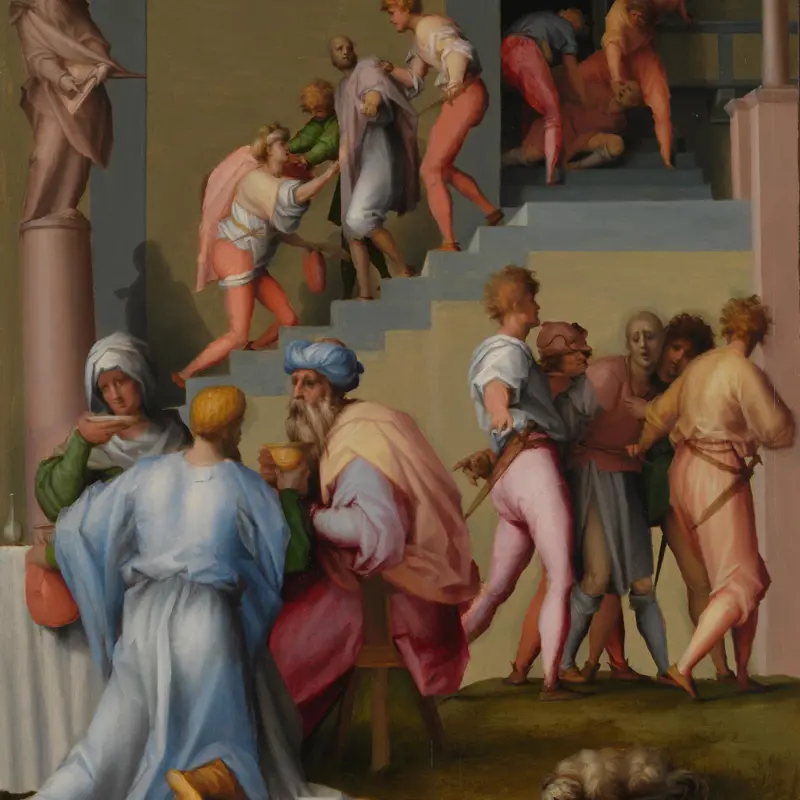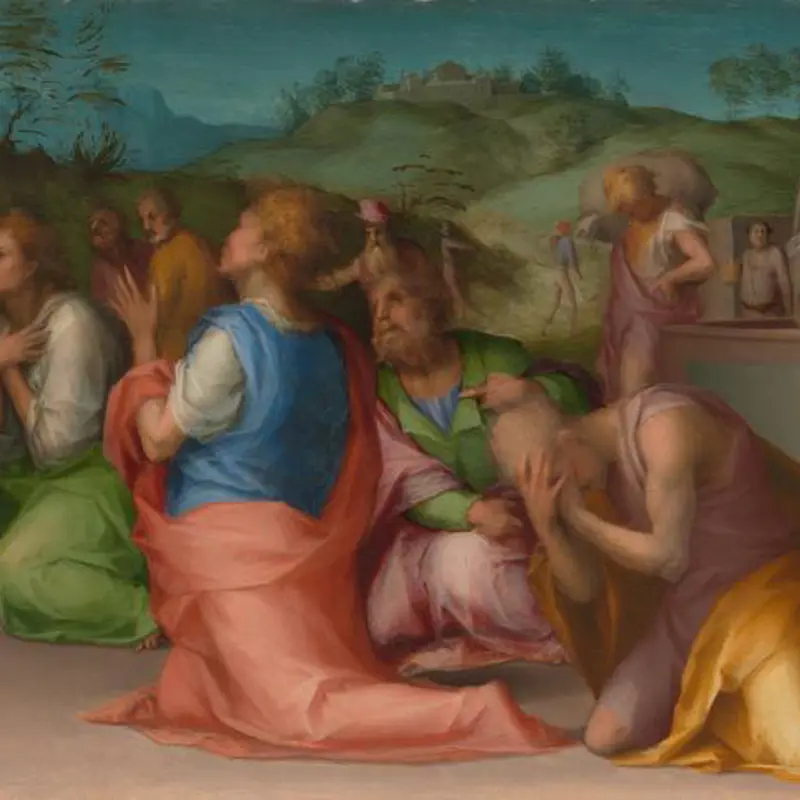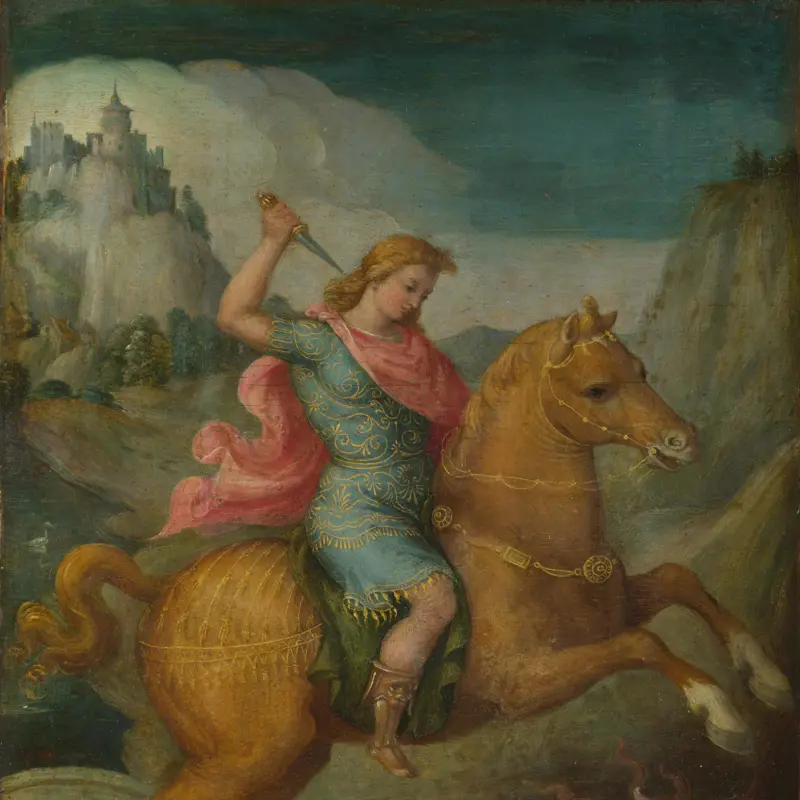Bacchiacca, 'Joseph receives his Brothers', probably 1515
About the work
Overview
This painting is one of a series of panels that decorated the bedchamber of the Borgherini palace in Florence. Together, they tell the life of Joseph from the Old Testament (Genesis 43).
Joseph, who had been sold into slavery in Egypt as a boy by his half-brothers, foretold a famine from a dream Pharaoh had, and advised him to stockpile grain. Made vizier of Egypt, Joseph received his half-brothers who came in search of grain, but they did not recognise him. He accused them of spying and demanded that they bring their younger brother to Egypt to prove their honesty.
In this painting, they return to Egypt with their youngest brother, Benjamin – the little boy wearing blue – and gifts from their father. They present the gifts to Joseph in the centre, still not realising he is the brother they sold. Joseph sends them back home with a precious cup hidden in Benjamin’s sack. The outline of the cup is visible below Benjamin’s hand.
Key facts
Details
- Full title
- Joseph receives his Brothers on their Second Visit to Egypt
- Artist
- Bacchiacca
- Artist dates
- 1495 - 1557
- Part of the series
- Scenes from the Story of Joseph
- Date made
- Probably 1515
- Medium and support
- Oil on wood
- Dimensions
- 36.2 × 142.2 cm
- Acquisition credit
- Bought, 1886
- Inventory number
- NG1218
- Location
- Not on display
- Collection
- Main Collection
Provenance
Additional information
Text extracted from the ‘Provenance’ section of the catalogue entry in Cecil Gould, ‘National Gallery Catalogues: The Sixteenth Century Italian Schools’, London 1987; for further information, see the full catalogue entry.
Bibliography
-
1824Reale Galleria di Firenze, series 1 vol. 2, Florence 1824
-
1838G. Yates and Son, Catalogue of Paintings, Belonging to the Rev. John Sanford; Collected in Italy, from 1815 to 1837: Entrusted to G. Yates and Son, to be Partially Disposed of by Private Contract, at 209, Regent Street, London, 1838
-
1839Catalogue of Pictures by Italian, Spanish, Flemish, Dutch and French Masters, With Which the Proprietors Have Favoured the Institution, June 1839, London 1839
-
1847Catalogue Raisonné of Pictures etc. The Property of the Reverend John Sanford, London 1847
-
1857G.F. Waagen, Treasures of Art in Great Britain: Being and Account of the Chief Collections of Paintings, Drawings, Sculptures, Illuminated Mss. […], translated from German by Elizabeth Eastlake, 3 vols, London 1857, vol. 3
-
1955B. Nicolson, 'The Sanford Collection at Corsham', The Burlington Magazine, XCVII/628, 1955, pp. 207-14
-
1962Gould, Cecil, National Gallery Catalogues: The Sixteenth Century Italian Schools (excluding the Venetian), London 1962
-
1975C. Gould, Delaroche and Gautier: Gautier's Views on the 'Execution of Lady Jane Grey' and on other Compositions by Delaroche, London 1975
-
1980J. Mills and R. White, 'Analyses of Paint Media', National Gallery Technical Bulletin, IV, 1980, pp. 65-7
-
1987Gould, Cecil, National Gallery Catalogues: The Sixteenth Century Italian Schools, London 1987
-
1990A. Sumner, 'The Clerical Connoisseur', Antique Collector, 1990, pp. 124-30
-
1994D. Cordellier, 'Les dessins de Fernando Yañez de la Almedina', in P. Rosenberg et al., Hommage à Michel Laclotte. Etudes sur la peinture du Moyen Age et de la Renaissance, Milan 1994, pp. 415-29
-
2001
C. Baker and T. Henry, The National Gallery: Complete Illustrated Catalogue, London 2001
About this record
If you know more about this work or have spotted an error, please contact us. Please note that exhibition histories are listed from 2009 onwards. Bibliographies may not be complete; more comprehensive information is available in the National Gallery Library.
Images
About the series: Scenes from the Story of Joseph
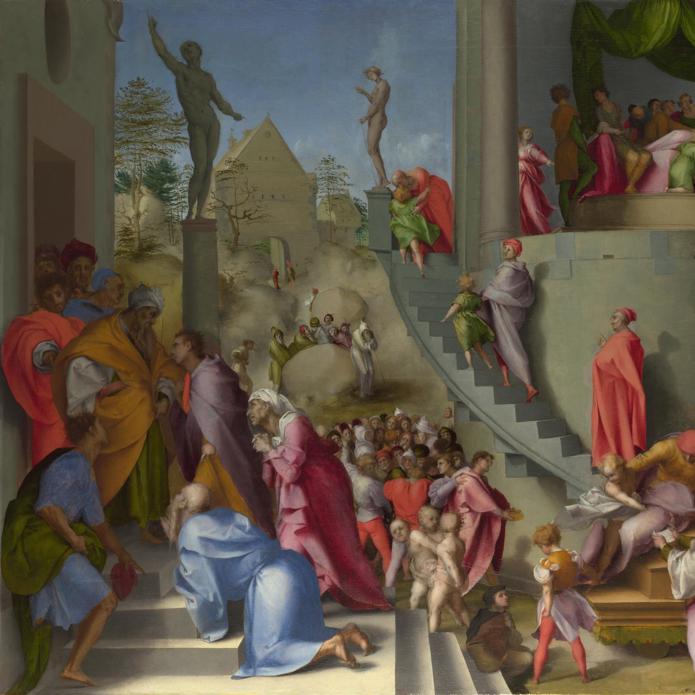
Overview
These six pictures by Pontormo and Bacchiacca were part of a larger series of panel paintings commissioned to celebrate the marriage of Pierfrancesco Borgherini to Margherita Accaiuoli in 1515. The series decorated the couple’s bedroom in the Borgherini palace in Florence. Francesco Granacci and Andrea del Sarto also contributed to the decorative scheme, which would have been one of the most sumptuous of the time. The paintings, telling the story of Joseph from the Old Testament (Genesis 39), would have been set into the wall panelling and furniture.
Pontormo’s interest in the emerging new style known as Mannerism – a reaction against the harmony, proportion and naturalism of High Renaissance art – is evident in his bright colours, disconcertingly unnatural approach to space, elongated figures and spiralling compositions. Bacchiacca’s scenes are expressive and dramatic but stylistically more conventional.

